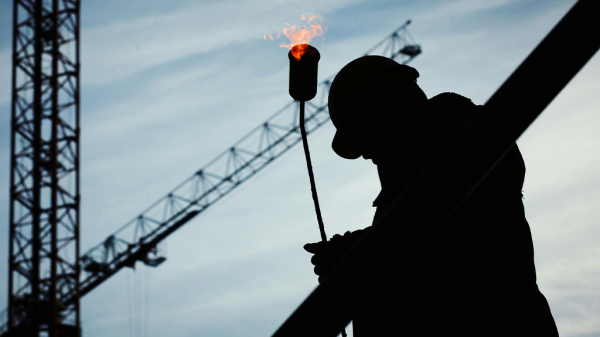If you practice real estate near a wind farm, you should know:
 With the increasing methods of alternative energy American cities are seeking out and implementing, the U.S. Department of Energy’s (DOE) Lawrence Berkeley National Laboratory set out to study whether or not wind power facilities impact sales prices of homes.
With the increasing methods of alternative energy American cities are seeking out and implementing, the U.S. Department of Energy’s (DOE) Lawrence Berkeley National Laboratory set out to study whether or not wind power facilities impact sales prices of homes.
Communities frequently worry about wind power facilities due to the large size, view obstructions and noise levels, but the Berkeley Lab released a report this week stating that “proximity to wind energy facilities does not have a pervasive or widespread adverse effect on the property values of nearby homes.” The research reviewed homes within 20 miles of 24 wind facilities across the country versus home sales between 1996 to 2007 in which time facilities were announced, constructed, completed and now operate.
Berkeley Lab consultant Ben Hoen said, “neither the view of wind energy facilities nor the distance of the home to those facilities was found to have any consistent, measurable, and significant effect on the selling prices of nearby homes. No matter how we looked at the data, the same result kept coming back – no evidence of widespread impacts.”
Although I’m not personally around a wind power facility (and haven’t seen one fully constructed in person yet), I find this quite surprising because of how insanely massive the individual pieces are, let alone an entire wind farm! Why do you think the data continually shows that facilities don’t impact sales prices despite noise and views?
Lani is the COO and News Director at The American Genius, has co-authored a book, co-founded BASHH, Austin Digital Jobs, Remote Digital Jobs, and is a seasoned business writer and editorialist with a penchant for the irreverent.






































Thomas Johnson
December 4, 2009 at 2:20 am
East Anglia style scientific method. The Kennedy’s on Martha’s Vineyard were surveyed about the effect of windmills on the value of the Kennedy compound. No windmills no effect on prices!
clare
December 4, 2009 at 4:33 am
I don’t necessarily think the study was an accurate result, I can’t imagine that enough homes have been sold in local areas to make the study a comparable result. Also house prices have drastically gone up and down over the last couple of years so it is hard to measure the impact. It would be better to do this study in about 5 years time. Also with so many alternative means of power and mobile phone masts etc being erected it surely comes down to which would you prefer to live near and I would imagine people would want to live near a wind farm as a opposed to a power station or a mobile phone mast.
Lani Rosales
December 4, 2009 at 10:52 am
“The research reviewed homes within 20 miles of 24 wind facilities across the country versus home sales between 1996 to 2007 in which time facilities were announced, constructed, completed and now operate.”
I wasn’t one of the researchers nor am I a scientist, but I can say for sure that home sales in a vast area for 11 years is pretty voluminous if you ask me and seems to be a pretty decent indicator. Realtors here do a “CMA” or Comparitive Market Analysis where agents compare recently sold, pending and active listings but I assure you that these reliable CMAs don’t compare every single home in a 20 mile radius nor do they go back 11 years combing MLS data. Just my two cents.
BawldGuy
December 4, 2009 at 9:59 am
Hilarious, Thomas. Thanks for that.
I think windmill farms have the same effect on prices as their impact on energy — zip, nada, not much.
Mike McCann
October 8, 2011 at 8:45 am
I was one of the "peer reviewers" of that 2009 Study. I can tell you with certainty that the authors would not disclose the underlying data, and that their footnotes contain some references to data excluded nearest the turbines, and thus, the data from 5-10 mile away is irrelevant.
Important to understand that the current generation of turbines are 400 to 500 feet tall, and have a "sweep" area of about 2 acres. This is a huge noise emitter as the blades sweep past the pole, making an amplitude modulation low frequency noise that can be "felt" at great distances. Many projects also cover land areas of 10,000 acres or more, and completely change the character of the rural communities they surround.
For Berkeley study, about 3 dozen transactions within 1 mile of turbines were excluded because the prices "deviated too far from the mean", and at least 2 developer buyout of homes were excluded, despite the developers reselling at 38% & 80% losses (a little fact not disclosed in report). Of course, those sales carried restrictions to the new owners, that they could not complain about any noise or adverse impacts….which is what is happening within 2-3 miles in many project locations world wide.
Berkeley study was funded by DOE who's policy is to encourage massive amounts of wind energy development.
Heintzelman study from July 2011 is independent and academically objective, and finds value losses ranging beyond 30%, up to 3 miles from turbines. They used over 10,000 sales for a 9 year period, and also used a regression analysis, so it is at least as reliable as the Berkely methodology and data.
There are many other impacts that, in my view, drive the real estate value declines near these projects. Not the least of which is the all too common sleep deprivation from the low frequency thumping, and people being driven from their homes by ongoing nuisance. Typical developer buy-outs include "gag order" terms, which prevent sellers from describing their experience or the terms of the buyout settlement. Projects in Ontario, Australia, UK, US exhibit home abandonment at an alarming rate…up to a dozen near a single project, and multiple abandonment's near many others.
These details get buried in 7,500 sales, so "widespread" impacts is a matter of how one uses the word. The impacts are indeed widespread…world wide in fact. 5, 10, 20 miles from a given turbine…rare impacts. But less than 3 miles…very common. At the typically requested 1,000 foot setback….virtually a guarantee of negative impacts for occupants.
If there is an epilogue yet, it would be that the Berkeley author, Ben Hoen, has now gone on record admitting that property values for homes nearby should be guaranteed by the wind developers. While he never said there are NO impacts, the wind industry prefers to tout his easily misunderstood comment about "no widespread" impacts.